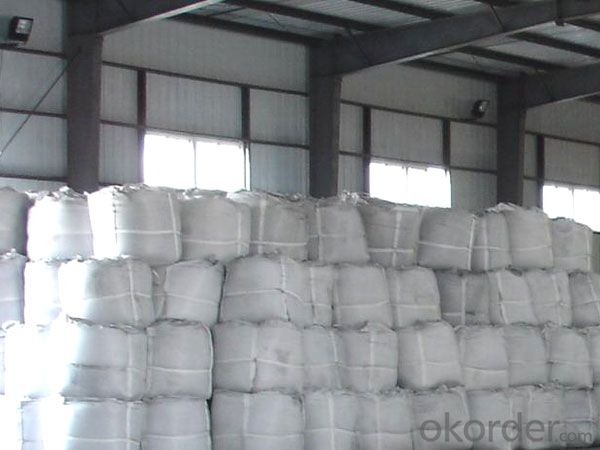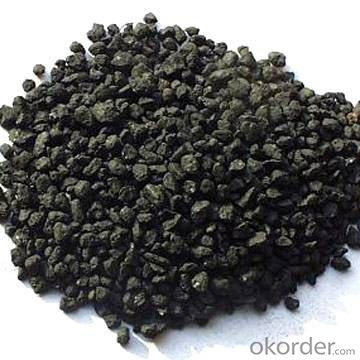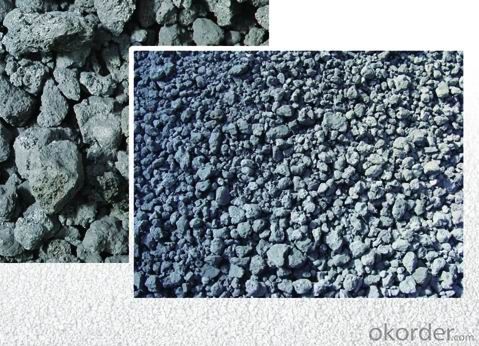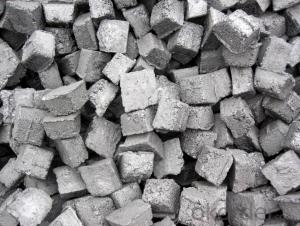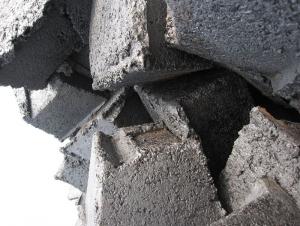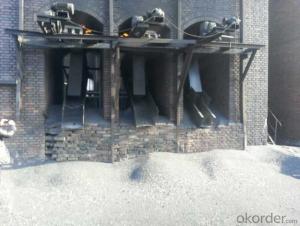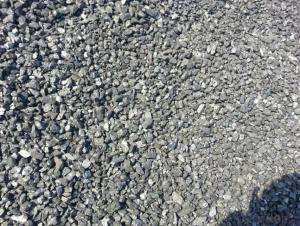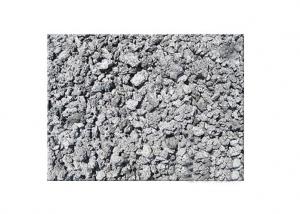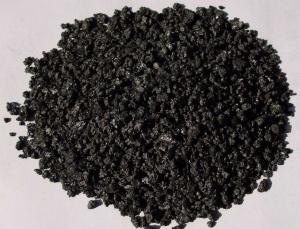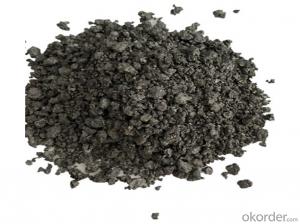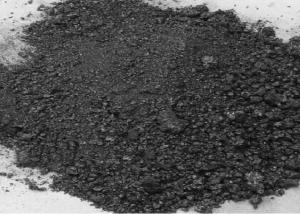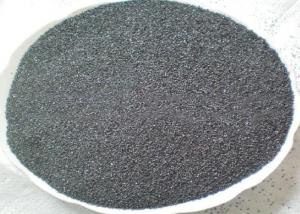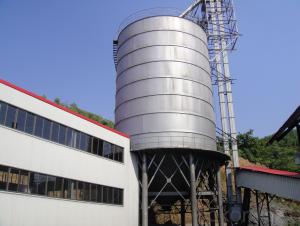CPC/Calcined Petroleum Coke/High Sulfur Graphite
- Loading Port:
- Tianjin
- Payment Terms:
- TT OR LC
- Min Order Qty:
- 1 m.t.
- Supply Capability:
- 10000000 m.t./month
OKorder Service Pledge
OKorder Financial Service
You Might Also Like
1.Structure of Calcined Petroleum Coke Description
Calcined Petroleum Coke is made from raw petroleum coke,which is calcined in furnace at a high temperature(1200-1300℃).CPC/Calcined Petroleum Coke is widely used in steelmaking,castings manufacture and other metallurgical industry as a kind of recarburizer because of its high fixed carbon content,low sulfur content and high absorb rate.Besides,it is also a best kind of raw materials for producing artifical graphite(GPC/Graphitized Petroleum Coke) under the graphitizing temperature(2800℃).
2.Main Features of the Calcined Petroleum Coke
High-purity graphitized petroleum coke is made from high quality petroleum coke under a temperature of 2,500-3,500°C. As a high-purity carbon material, it has characteristics of high fixed carbon content, low sulfur, low ash, low porosity etc.It can be used as carbon raiser (Recarburizer) to produce high quality steel,cast iron and alloy.It can also be used in plastic and rubber as an additive.
3. Calcined Petroleum Coke Images
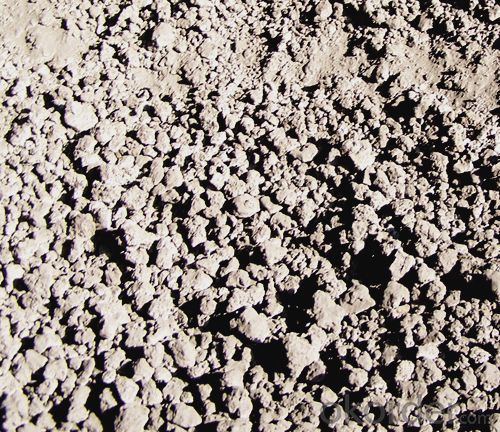
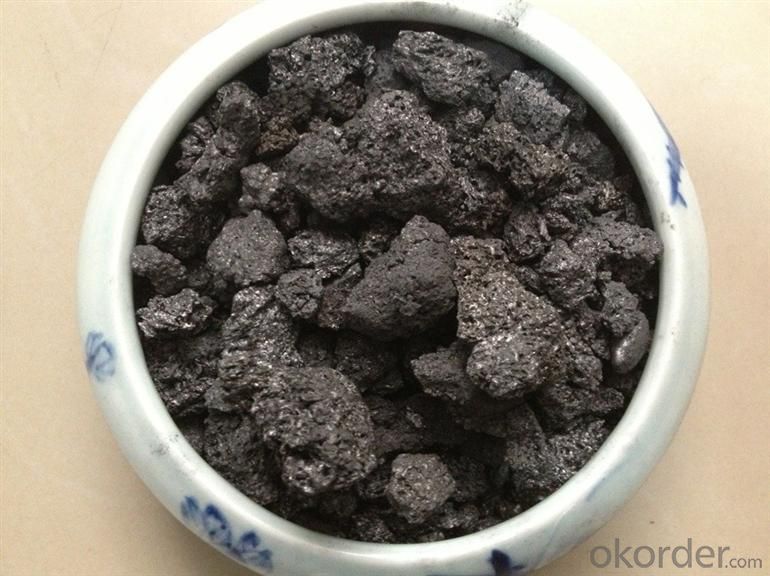
4. Calcined Petroleum Coke Specification
Specifications | TYPEⅠ | TYPEⅡ | TYPEⅢ |
F.C(Min) | 98.5% | 98.5% | 98% |
S(Max) | 0.5% | 0.5% | 0.5% |
ASH(Max) | 0.50%% | 0.80% | 0.80% |
V.M(Max) | 0.50% | 0.70% | 0.70% |
H2O(Max) | 0.5% | 0.5% | 0.5% |
Size: | 0.5-5mm,1-5mm,3-8mm,ect. | ||
5.FAQ of Calcined Petroleum Coke
1). Q: Are you a factory or trading company?
A: We are a factory.
2). Q: Where is your factory located? How can I visit there?
A: Our factory is located in ShanXi, HeNan, China. You are warmly welcomed to visit us!
3). Q: How can I get some samples?
A: Please connect me for samples
4). Q: Can the price be cheaper?
A: Of course, you will be offered a good discount for big amount.
- Q: What are the impacts of carbon emissions on the stability of mountains?
- Carbon emissions can have various impacts on the stability of mountains. One significant effect is the acceleration of glacial melting, leading to increased water runoff and the potential for more frequent and severe landslides. Additionally, carbon dioxide contributes to the acidification of rainwater, which can corrode rocks and weaken the stability of mountain slopes. Climate change, driven by carbon emissions, also leads to alterations in precipitation patterns, temperature, and weather events, increasing the risk of erosion, rockfalls, and avalanches. Overall, carbon emissions have a detrimental influence on the stability of mountains, posing risks to both human populations and ecosystems.
- Q: Want advanced reinforcement, but I do not know where the high furnace rock carbon, looking for someone to guide...
- Mall. In fact, BUG can be card out! Inside the palace there is that BUG, but I personally think that no use, I used to strengthen the use of advanced carbon weapons on 12, even 3 did not become a storm, this is only the way to make money TX it
- Q: How does carbon affect the growth of plants?
- Carbon is essential for plant growth as it is a key component of carbohydrates, proteins, and other organic compounds that are vital for plant structure and function. Through the process of photosynthesis, plants absorb carbon dioxide from the atmosphere and convert it into glucose, which provides energy for growth and development. Carbon also plays a crucial role in regulating plant water uptake and nutrient absorption. In summary, carbon is indispensable for the growth and overall health of plants.
- Q: How is carbon involved in the metabolism of carbohydrates, proteins, and fats?
- The metabolism of carbohydrates, proteins, and fats relies heavily on carbon, a fundamental element. Within all three macronutrients, carbon atoms play a vital role in forming their molecular structures. Carbohydrates contain carbon in the form of glucose, which serves as the body's primary energy source. Through glycolysis, glucose is broken down into smaller molecules, generating ATP for cellular energy. Carbon atoms in glucose are rearranged and converted into intermediate compounds, which are further utilized in other metabolic pathways. In contrast, proteins are intricate molecules made up of amino acids, each containing a carbon atom. During protein metabolism, carbon atoms participate in various reactions, including deamination and transamination, enabling the synthesis or breakdown of proteins. Carbon atoms also contribute to the formation of peptide bonds, linking amino acids together to create the backbone of proteins. In the metabolism of fats or lipids, carbon is predominantly found in the fatty acid chains. These chains provide a high-energy fuel source, as they can be broken down through beta-oxidation. Sequential cleavage of carbon atoms from fatty acids produces acetyl-CoA, which enters the citric acid cycle (also known as the Krebs cycle) to generate ATP. Furthermore, carbon atoms from fatty acids can be utilized for the synthesis of other molecules, such as cholesterol and hormones. In summary, carbon plays a crucial role in the metabolism of carbohydrates, proteins, and fats. Its involvement in these metabolic processes facilitates energy production, the synthesis and breakdown of essential molecules, and the regulation of various physiological functions.
- Q: How does carbon impact food production?
- There are several ways in which carbon affects food production. To begin with, carbon dioxide (CO2) is a significant greenhouse gas that plays a role in climate change. The presence of higher levels of CO2 in the atmosphere leads to increased temperatures, changes in rainfall patterns, and more frequent extreme weather events. All of these factors can have a negative impact on crop growth and productivity. For instance, excessive heat can result in lower crop yields and reduced quality, while intense rainfall or droughts can cause flooding or water scarcity, both of which can harm crops and decrease agricultural productivity. Moreover, carbon emissions originating from agricultural practices, such as the utilization of synthetic fertilizers, deforestation for agriculture, and livestock production, contribute to the overall carbon footprint of the food system. These emissions worsen climate change, establishing a vicious cycle in which climate change has an adverse effect on food production, while food production, in turn, contributes to climate change. Furthermore, the production of food is also influenced by carbon emissions from its transportation and processing. The transportation of food over long distances, which often involves the use of fossil fuels, leads to carbon emissions. Similarly, the processing and packaging of food require energy, often derived from fossil fuels, which further adds to carbon emissions. To alleviate the carbon impact on food production, it is necessary to adopt sustainable agricultural practices. This includes techniques like agroforestry, organic farming, and precision agriculture, which can help store carbon in soils, reduce dependency on synthetic fertilizers, and enhance overall soil health. Additionally, reducing food waste and promoting the consumption of local and seasonal food can decrease carbon emissions associated with transportation and processing. In conclusion, carbon affects food production through its contribution to climate change and the resulting extreme weather events, as well as through emissions generated from agricultural practices and food processing. Addressing these impacts is crucial for ensuring food security and sustainability in the face of climate change.
- Q: What is carbon black filler?
- Carbon black filler, a commonly utilized additive in the production of rubber and plastic products, is derived from the incomplete combustion of hydrocarbons, such as oil or natural gas. It takes the form of a fine, powdery substance and is primarily composed of elemental carbon, with trace amounts of hydrogen, oxygen, and sulfur. The primary objective of incorporating carbon black filler is to enhance the physical characteristics of rubber and plastic materials. Its addition improves the strength, durability, and wear resistance of the final product. Furthermore, carbon black filler increases the material's stiffness and hardness, making it suitable for various applications. Beyond its mechanical properties, carbon black filler offers additional advantages. It acts as a reinforcing agent, augmenting the tensile strength and tear resistance of rubber compounds. Additionally, it heightens the material's electrical conductivity, proving valuable in scenarios where static electricity dissipation is necessary. Moreover, carbon black filler safeguards the material against the detrimental effects of UV radiation and ozone. It serves as a UV stabilizer and antioxidant, preventing degradation and extending the product's lifespan. Furthermore, carbon black filler enhances the thermal conductivity of rubber and plastic materials, facilitating heat dissipation. Overall, carbon black filler is a versatile and extensively employed additive in the manufacturing industry. Its distinctive attributes render it an indispensable component in the production of various rubber and plastic products, including tires, conveyor belts, hoses, gaskets, among others.
- Q: What are carbapenem antibiotics?
- The home has been listed on the varieties of imipenem, meropenem, panipenem, faropenem, ertapenem, biapenem.Carbapenem antibiotics are the most widely antibacterial and atypical antibiotics with the strongest antibacterial activity.
- Q: What does carbon cloth tonnage mean?
- Carbon cloth tonnage is illegal: mean a square centimeter of sectional area of carbon cloth tension of tonnage. Meaning that the carbon cloth rolled into a solid "rod" if the cross-sectional area of the bar is 1 cm, the maximum tension tonnage it bear -- carbon cloth tonnage.
- Q: What are the different types of carbon-based composites?
- There are several different types of carbon-based composites, including carbon fiber reinforced polymers (CFRP), carbon nanotube composites, carbon nanofiber composites, and graphene composites.
- Q: What is carbon neutral tourism?
- Carbon neutral tourism refers to a type of tourism that aims to minimize or offset the carbon emissions generated by travel activities. It involves implementing sustainable practices, such as using renewable energy sources, promoting energy efficiency, and supporting carbon offset projects. The goal is to achieve a balance between the amount of carbon emitted and the amount removed from the atmosphere, thus reducing the overall carbon footprint of the tourism industry.
Send your message to us
CPC/Calcined Petroleum Coke/High Sulfur Graphite
- Loading Port:
- Tianjin
- Payment Terms:
- TT OR LC
- Min Order Qty:
- 1 m.t.
- Supply Capability:
- 10000000 m.t./month
OKorder Service Pledge
OKorder Financial Service
Similar products
Hot products
Hot Searches
Related keywords




